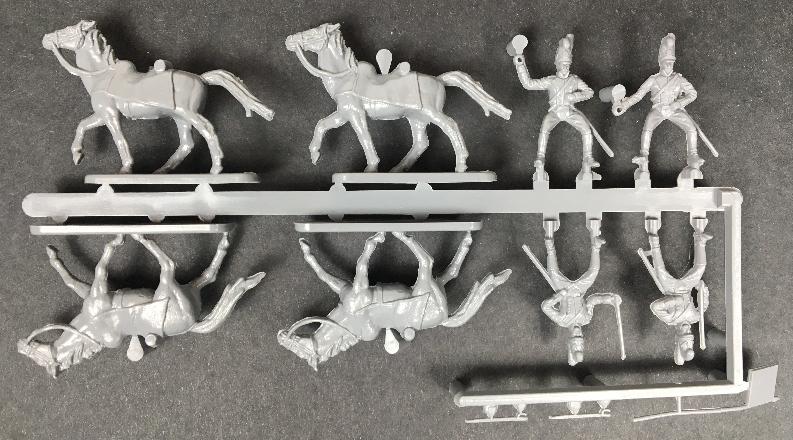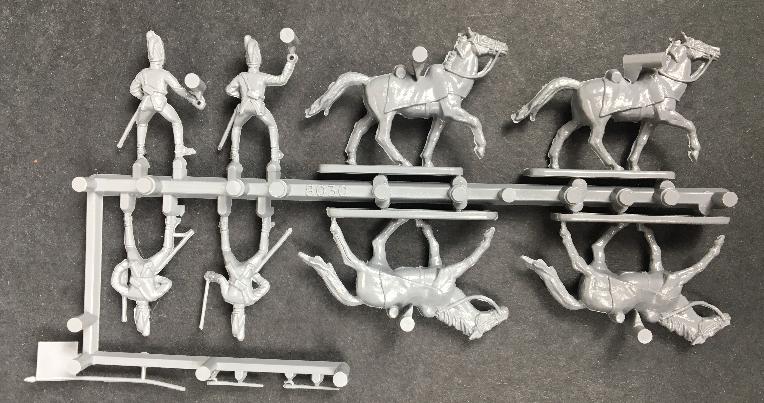
Bavarian Cavalry Box






When Napoleon became Emperor the Bavarian cavalry consisted of Dragoon and Chevauxleger (Light Horse) Regiments. They were uniformed almost identically, the dragoons wearing white coats and the Chevauxlegers light green, both with grey overalls. They followed the Bavarian Army in its limited part in the 1805 and 1806-7 campaigns. In 1809 the Chevauxlegers changed to dark green uniforms, and bloodied their new coats fighting against the Austro-Hungarian invasion of their homeland that started the 1809 campaign.
In 1811 the one remaining Dragoon regiment was converted to Chevauxlegers, and so the Bavarian Army Corps that marched into Russia a year later was accompanied by no less than 6 Regiments of Light Horse. The cavalry joined the main army marching on Moscow and fought at the battle of Borodino, sacrificing themselves to protect the army's flank. No more than 80 Bavarian cavalrymen marched out of Russia.
In 1813, the ghost of the Bavarian Army that took to the field included a converged Chevauxlegers regiment, while the Regiments were re-raised nearly from scratch, and a new one (wearing shakos instead of helmets) added to the order of battle. The new Bavarian Cavalry saw its first action in late October 1813 at the Battle of Hanau, now on the side of the Austro-Prusso-Russian alliance, attempting to trap the remains of Napoleon's Grande Armee retreating from Germany. The French managed to push through, but it is a testament to the Bavarians' bravery that they nearly stood up to the Imperial Guard. They joined the main allied Army and in April 1814 entered Paris. It was a proper reward for a decade of hard actions.
These figures can be painted as Dragoons or Chevauxlegers. More enterprising modellers can also use them as Württemberg cavalry with minor modifications to the lapels.
Aris Kosionidis
Greece.
Copyright 2000. All rights reserved. Any unauthorized use of content or images are violations of applicable laws and will be prosecuted to the fullest extent of the law.